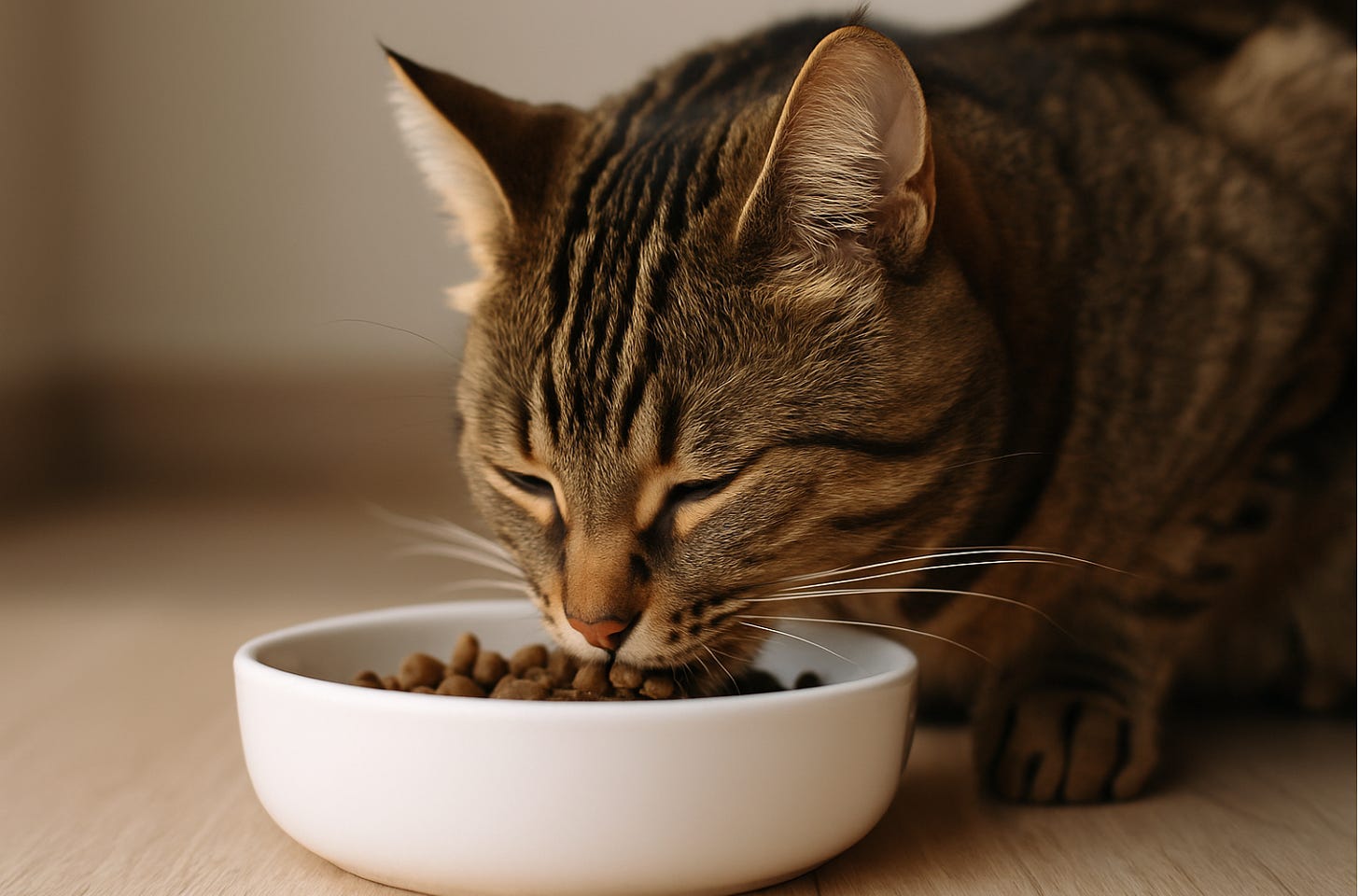The Food Mistake Most Cat Parents Don't Realize They're Making
Feeding kibble? Mixing proteins? Skipping moisture? In this interview clip, Dr. Ruth Roberts breaks down the most common nutrition trap—and how to fix it.
Hey Whisker Crew,
If you’re still feeding your cat dry kibble, you’re not alone—and you’re not a bad cat parent.
I used to do the same thing.
Nomar and Mia, my two soul cats, were on dry food for the first 12–13 years of their lives. I didn’t know any better. I just assumed if I was buying from a vet or a pet store, it had to be good.
But when Mia developed kidney disease later in life, I started questioning everything. Why was her health declining so quickly? Could I have done something differently?
That’s why I wanted to highlight a short but powerful clip from my conversation with Dr. Ruth Roberts—one of the leading voices in holistic pet nutrition.
She didn’t just explain what to feed your cat. She explained how to make the switch—without the guilt, shame, or overwhelm.
Listen to the clip below.
🐾 Main takeaway:
You don’t have to be perfect. But you do need to start.
Feeding kibble long-term raises the risk of blood sugar issues, inflammation, and even diabetes. But the good news? You can change that—starting today.
Whether your cat is a curious kitten or a 12-year kibble veteran, Dr. Ruth outlines a simple, doable plan for making the switch to fresh, healthier food.
✅ The Step-by-Step Transition Plan:
Here’s what Dr. Ruth recommends:
1. Start with canned food.
If your cat’s eating dry food, begin mixing in small amounts of wet food (¼ tsp at first) alongside kibble. Gradually increase over time.
2. Be patient.
Some cats switch in a month. Others (like Dr. Ruth’s cat Romy) took 6–9 months. That’s okay. The key is steady progress.
3. Once your cat is used to canned food, transition to your end goal:
Whether that’s gently cooked or raw, move slowly, watch your cat’s behavior, and celebrate every step forward.
4. Watch for hidden carbs.
Cats are obligate carnivores. Look for foods with meat as the first several ingredients—not peas, rice, potatoes, or lentils.
🐱 What I’m doing with Niko and Milo:
These days, I feed Niko and Milo a high-quality wet food from Open Farm. It’s human-grade, moisture-rich, and worlds better than kibble. I also give them freeze-dried raw food and a probiotic.
But after talking with Dr. Ruth, I realized there’s still more I can do.
Next steps for me?
➡️ Try single-protein options (vs. combo meats like chicken + salmon)
➡️ Rotate proteins more intentionally
➡️ Add in more veggies and toppers (like sardines or bone broth)
➡️ Explore gently cooked frozen foods as the next level up
It’s a work in progress—but that’s the point.
🎧 Listen to the full episode:
Episode: “You’re Probably Feeding Your Cat Wrong - Here’s How To Fix It With Dr. Ruth Roberts”
👉 Click here to listen or search Golden Whiskers wherever you get your podcasts.
🧡 Final thought:
“Even switching from kibble to canned food is a big win.”
— Dr. Ruth Roberts
Your cat doesn’t need a perfect diet overnight. They need you to care enough to start asking questions—and to make one small upgrade at a time.
If you're feeling stuck, you're not alone. This clip is a great place to begin.
🐾 This week’s Cattitude Prompt:
What’s one small nutrition upgrade you could try this week?
→ A new food? A topper? A better ingredient label?
Hit reply or post a comment and let me know. I’d love to hear where you are in your food journey.
Thanks for being here, and for caring so much about your cats.
See you next time,
💛 Scott
Founder, Golden Whiskers




What’s one small nutrition upgrade you could try this week?
→ A new food? A topper? A better ingredient label?
Feel free to comment below and let me know. I’d love to hear where you are in your food journey. No judgement - I've made all of the mistakes when it comes to cat nutrition. ❤️
Thrilled to see you here!